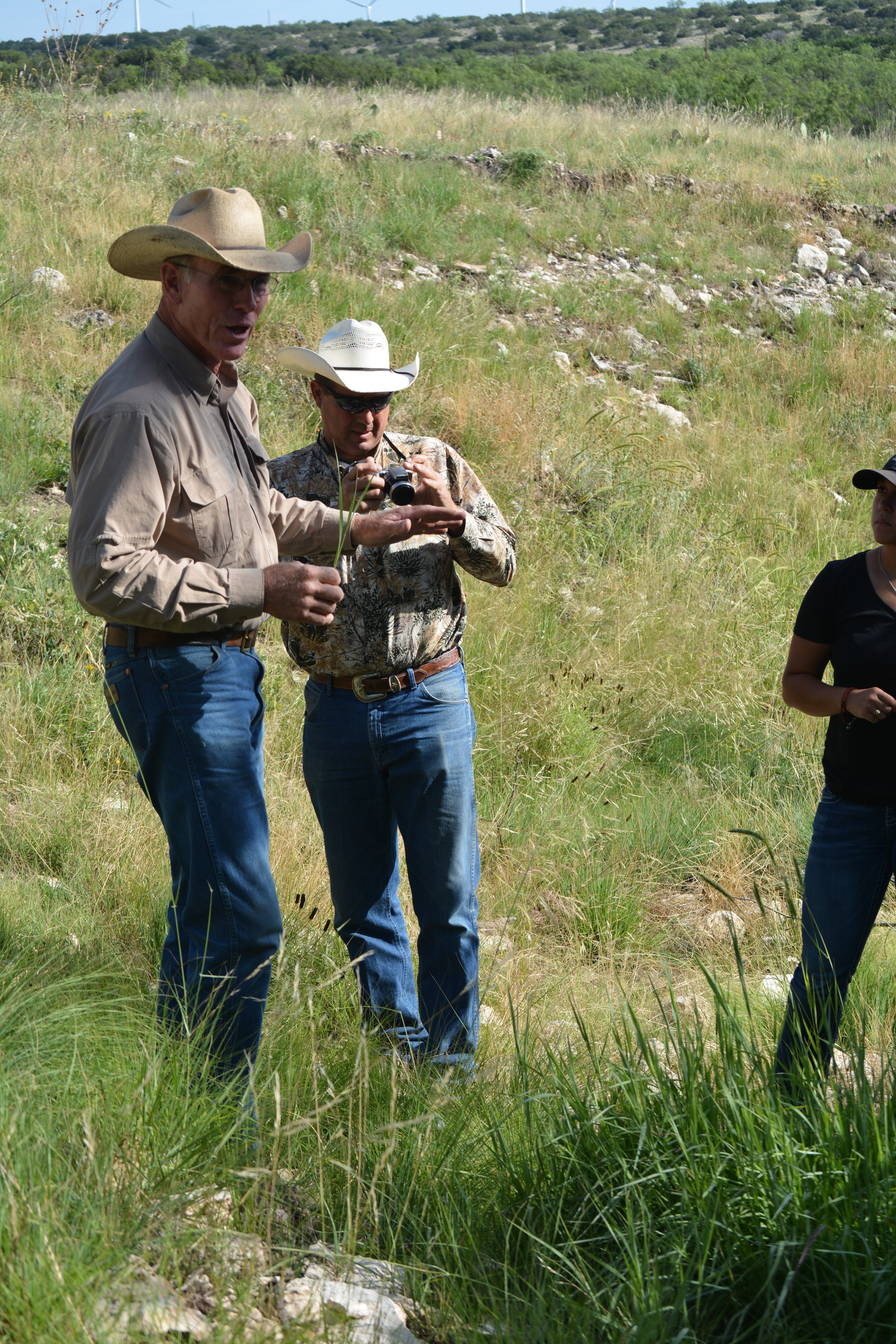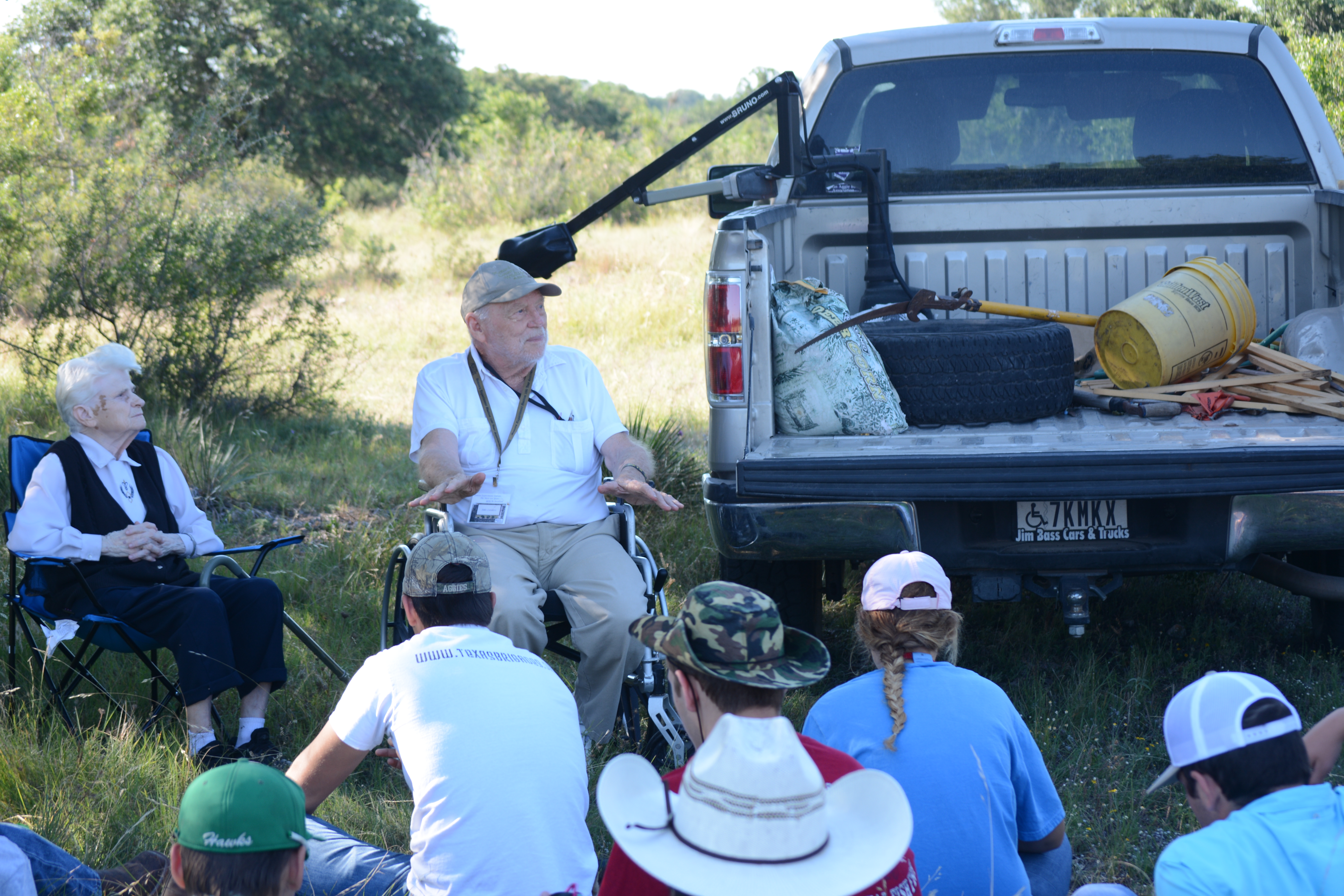Dr. Jake Landers
After a 30-year career with Extension, I hope I have half the brains, sanity, and passion that my dear friend and colleague, Dr. Jake Landers possesses. Dr. Landers set the bar pretty dang high and it is an honor to learn from him in the pasture and in the classroom. As I said in an earlier post, Dr. Landers morphed into a Range Father of mine overnight. The second I met him he was my hero.
Dr. Jake Landers served as an Extension Range Specialist at the Texas A & M Research and Extension Center, San Angelo in 1979. He developed techniques and procedure for individual plant treatment of brush and prickly pear cactus for ranchers in 17 counties. He initiated prescribed burning as a procedure for managing rangeland to reduce undesirable species and stimulate grasses. He wrote short articles for newspapers and magazines and continued writing after his retirement from the Extension Service. He was recognized as the outstanding person in Range by the Texas Section of the Society for Range Management in 1990 and Sustained Lifetime Achievement Award by the parent society in 2016.
Jake described himself as a gentleman rancher at best, but I beg to differ. His Dad was in full charge until Jake was 60, and his brother Fritz assumed the duties until they divided up 20 years later. Since then Dr. Landers has helped decide when and where to graze and when and where to burn, control mesquite and pricklypear. Dr. Landers is not trying to make a profit, but he is still learning and operating by experiment. Most of which I am convinced is adaptive management, but Jake makes it look so dang easy, fun, and effortless that it is more stewardship than anything.
How did you get your start in ranching? I learned a lot about raising sheep, goats and cattle growing up on the ranch until I was 18. I had intended to get a degree and come home to ranch. But the drought and other interests kept me in school until I was independent of making a living on the ranch.
How important is agriculture to your family? Agriculture was important growing up because it was 95% of our income. Now it is important as an enjoyable experimental hobby.
What makes ranching in West Texas so unique? Speaking more of the Edwards Plateau, the mix of vegetation allows raising of cattle sheep and goats while keeping a viable white tailed deer herd for hunting.
Do you feel like there is enough emphasis on agriculture in K-12 education? Not in the least. My experience with teachers in conservation workshops indicates that most do not have an adequate background in agriculture to provide the information.
Who did you learn the most from along the way? I learned about plants mostly on my own. I learned a lot working on programs with county agents and a lot about burning from Larry White, Range Extension Specialist at Uvalde.

 rice Ranch was recognized for their range management when they were presented the Outstanding Rangeland Stewardship Award by the Texas Section, Society for Range Management and Texas and Southwestern Cattle Raisers Association. And it was recognized as a 2013 regional Environmental Stewardship Award Program (ESAP) winner during the 2013 Cattle Industry Summer Conference.
rice Ranch was recognized for their range management when they were presented the Outstanding Rangeland Stewardship Award by the Texas Section, Society for Range Management and Texas and Southwestern Cattle Raisers Association. And it was recognized as a 2013 regional Environmental Stewardship Award Program (ESAP) winner during the 2013 Cattle Industry Summer Conference.